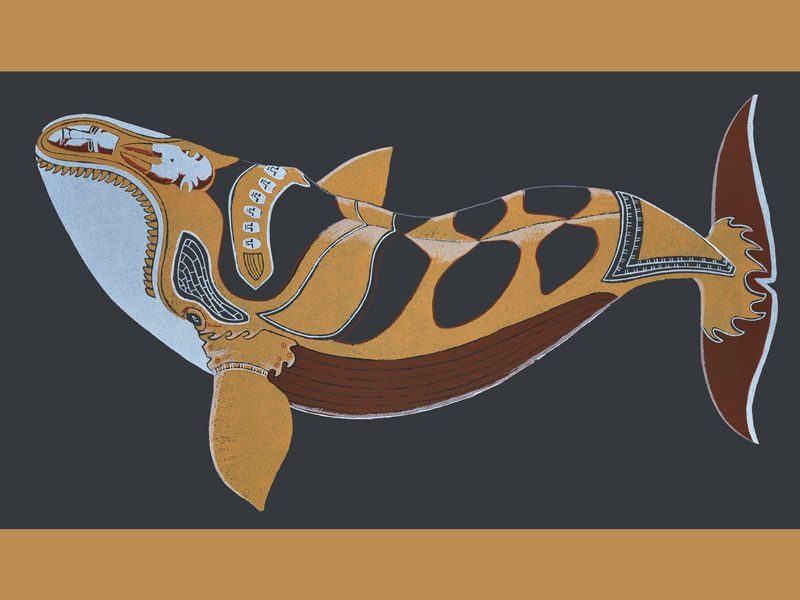
Although Brower's body remained in Anchorage, the young bowhead took him more than 1,000 kilometers north to Barrow (now Utqiaġvik), where Brower's family lived. They traveled together through the town and past the indistinct edge where the tundra gives way to the Arctic Ocean. There, in the ice-blue underwater world, Brower saw Iñupiat hunters in a sealskin boat closing in on the calf's mother.
Brower felt the shuddering harpoon enter the whale's body. He looked at the faces of the men in the umiak, including those of his own sons. When he awoke in his hospital bed as if from a trance, he knew precisely which man had made the kill, how the whale had died, and whose ice cellar the meat was stored in. He turned out to be right on all three counts.
Brower lived six years after the episode, dying in 1992 at the age of 67. In his final years, he discussed what he had witnessed with Christian ministers and Utqiaġvik's whaling captains. The conversations ultimately led him to hand down new rules to govern hunting female whales with offspring, meant to communicate respect to whales and signal that people were aware of their feelings and needs. "[The whale] talked to me," Brower recalls in a collection of his stories, The Whales, They Give Themselves. "He told me all the stories about where they had all this trouble out there on the ice."
Read the rest here



Comment: Scandinavian Stone Age society more reliant on fishing than previously thought - particularly aquatic mammals